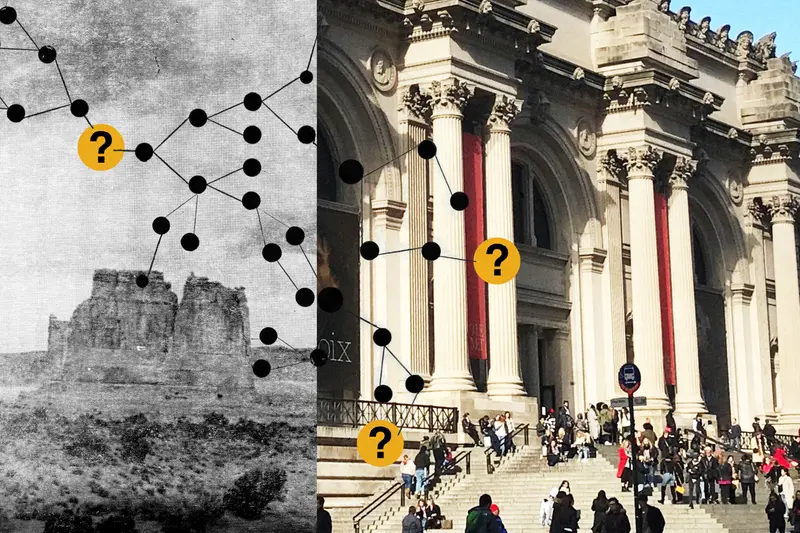ProPublica is a nonprofit newsroom that investigates abuses of power. Sign up to receive our biggest stories as soon as they’re published.
Stepping into the Metropolitan Museum of Art, Shyanne Beatty was eager to view the Native American works that art collectors Charles and Valerie Diker had been accumulating for nearly half a century. But as she entered the museum’s American Wing that day in 2018, her excitement turned to shock as two wooden masks came into view.
Beatty, an Alaska Native, had worked on a radio documentary about the two Alutiiq objects and how they and others like them had been plundered from tribal land about 150 years ago. Now, the masks were on display in the biggest and most esteemed art museum in the Western Hemisphere. “It was super shocking to me,” she said.
The Met’s ownership history for the masks, also known as provenance, omits more than a century of their whereabouts. Historians say the masks were taken in 1871. But the museum’s timeline doesn’t start until 2003, when the Dikers bought them from a collector. Ownership was transferred to the Met in 2017.
The Dikers, who have amassed one of the most significant private collections of Native American works, have been donating or lending objects to the Met since 1993. In 2017, as other institutions grappled with returning colonial-era spoils, the Met announced the Dikers’ gift of another 91 Native American works.
A ProPublica review of records the museum has posted online found that only 15% of the 139 works donated or loaned by the Dikers over the years have solid or complete ownership histories, with some lacking any provenance at all. Most either have no histories listed, leave gaps in ownership ranging from 200 to 2,000 years or identify previous owners in such vague terms as an “English gentleman” and “a family in Scotland.”
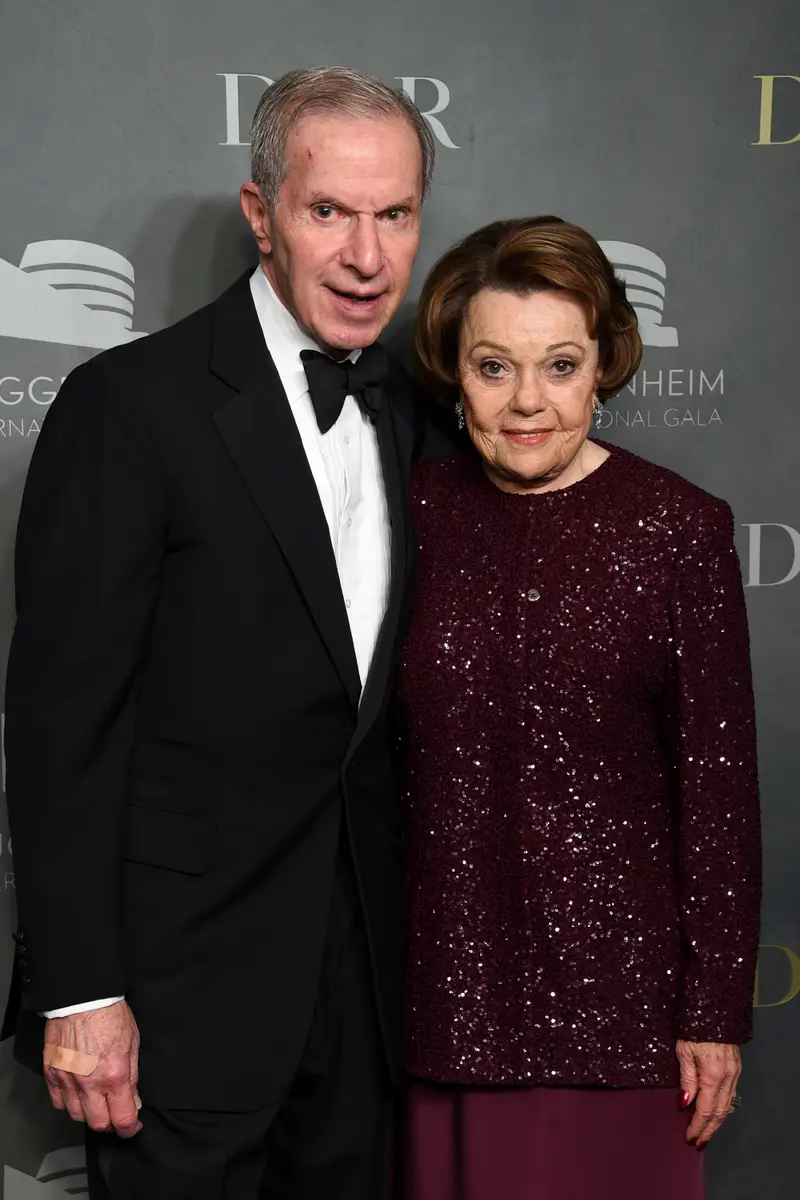
Experts say a lack of documented histories is a red flag that objects could have been stolen or may be fake.
“That’s a lot of missing documentation, which is a problem,” said Kelley Hays-Gilpin, a curator at the Museum of Northern Arizona. The Arizona museum has documented about 80% of its collection, as has the Brooklyn Museum and other institutions that are considered less prestigious than the Met but that have substantial Native American collections. Some museums, such as one at the University of Denver, decline gifts that have poor provenance.
For centuries, Native Americans have decried the looting of the graves of their ancestors by pothunters and scientists and the display of their remains and belongings in museums. In 1990, Congress passed the Native American Graves Protection and Repatriation Act to facilitate the return of such items and human remains to the appropriate tribes, which the law declares are their rightful owners.
NAGPRA requires federally funded museums to notify a tribe within six months of receiving their holdings by contacting and consulting with that tribe’s chosen representative, often known as a Tribal Historic Preservation Officer, and giving them an opportunity to reclaim their objects. The law also mandates that museums file a copy of those notices with the National Park Service.
These interactions provide an opportunity for institutions to learn more about the history of objects, whether they are authentic or might have been stolen and if it’s appropriate to display them. But as ProPublica has reported this year, museums have often delayed such discussions while keeping human remains and objects that the law says should be returned.
Some pieces in the Diker Collection are sacred, such as a shaman’s rattle made of human or horse hair; some are funereal and were buried with the dead. (The Met recently returned the rattle to the Dikers, and there are “ongoing consultations” related to some other items, according to the museum.)
“Most of these items could only have ended up in private hands through trafficking and looting,” said Shannon O’Loughlin, director of the Association on American Indian Affairs, which advocates for tribal sovereignty and the protection of Native American cultures.
“The way that so many of these things wound up in museums is horrible,” said Rosita Worl, president of Sealaska Heritage and a Tlingit citizen. New York law goes by the principle of once stolen, always stolen, and she said the pieces are tainted. “The rightful thing is for these things to be returned home.”
Initially, many of the objects were loans; due to a loophole in NAGPRA, this meant the museum did not have to report them to tribes or to the NPS. To date, the museum has accepted the transfer of 77 of the promised gifts from the Diker Collection, according to the Met.
But ProPublica found that after assuming ownership the Met for years failed to consult the necessary tribal officials in a timely and consistent manner about objects in its collections. A year passed before the museum contacted someone at the Alutiiq tribe to inform them that it had their masks. (The Met declined to name the person it contacted.) Four years later, the NPS posted summaries that the Met had sent in September 2022 to 63 tribes connected to objects in the Diker Collection. The Met did so after ProPublica asked the museum about the masks and other sacred and culturally sensitive items.
All the while, the museum displayed some items with incorrect descriptions and omitted or minimized the wars, occupations, massacres and exploitation that dominated the tribes’ past.
The Met’s descriptions in its displays “are in the land of make-believe,” said Wendy Teeter, the former curator at the Fowler Museum at the University of California, Los Angeles. “The public won’t have a clue as to what a piece really is or how it got there.” This, Teeter said, “perpetuates stereotypes and bias against Native people.”
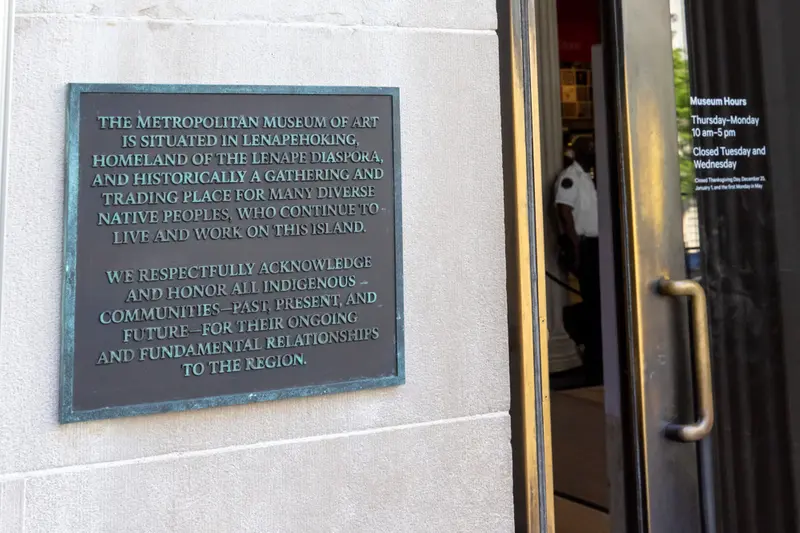
Dan Monroe, who helped draft NAGPRA and is a former director of the Association of Art Museum Directors, said the long delays in notifying tribal representatives and the NPS are a violation of the law: “They have a responsibility to follow the law and are subject to fines if they don’t.”
In a written statement, the museum said: “Although some progress has been made in updating the online catalog information and providing more complete provenance information, we recognize there is still much work to do and that this is an ongoing process that requires relationship building, patience, and great care. This is important work, and it is precisely one of the intentions of the Dikers to have a large, well-resourced institution such as The Met devote the time and scholarship to these Native items.”
The museum also stated that it is misleading to use “complete ownership histories as a standard for judging a collection,” noting that much of the Diker collection has previously been exhibited and researched by other major U.S. museums. “When new information about collection items comes to light, we openly share it (if advised by Indigenous leaders to do so), or remove culturally sensitive items from view as requested.”
During its investigation, ProPublica asked the Met to comment on statements about the collection. Some sources who had made on-the-record statements that were shared with the museum by ProPublica later asked to withdraw their statements. One indicated that they’d been contacted by a Met employee. (The Met said it constantly engages with a wide range of professionals and did not exert any pressure on sources for this story.)
The Dikers declined interview requests. In a written statement to ProPublica, they said: “For nearly 50 years, inspiring appreciation for the arts of Native America has been our greatest passion.” The couple also said that they had assessed “all available information relating to provenance” before acquiring the works.
If a museum can prove it has legal title, meaning that the object’s creator, their descendents or a tribal representative willingly transferred the piece, the museum doesn’t have to return an item. But if a tribal officer requests the return of an item, a museum must comply, unless it can prove it’s part of the chain of ownership, ideally going back to its origin. Complicating matters, thousands of Native American pieces at the Met have been in its collection since 1889, an era when many museums didn’t track the ownership histories of such works.
Questions about the legitimacy of the Met’s ownership of artwork extend beyond its American Wing. As part of a sweeping investigation into the trafficking of antiquities, the Manhattan District Attorney’s office has issued nine warrants over the past five years to seize about three dozen looted artifacts at the Met, as well as computers, memos and other material related to the objects.
Matthew Bogdanos, an assistant district attorney in Manhattan who leads the office’s antiquities trafficking unit, said he and his team found the sales histories of the seized antiquities were either fraudulent, incomplete or nonexistent. The D.A.’s office looked at filing charges for criminal possession of stolen property. “But their actions didn’t cross the threshold of ‘beyond a reasonable doubt,’” Bogdanos told ProPublica, so no charges were filed.
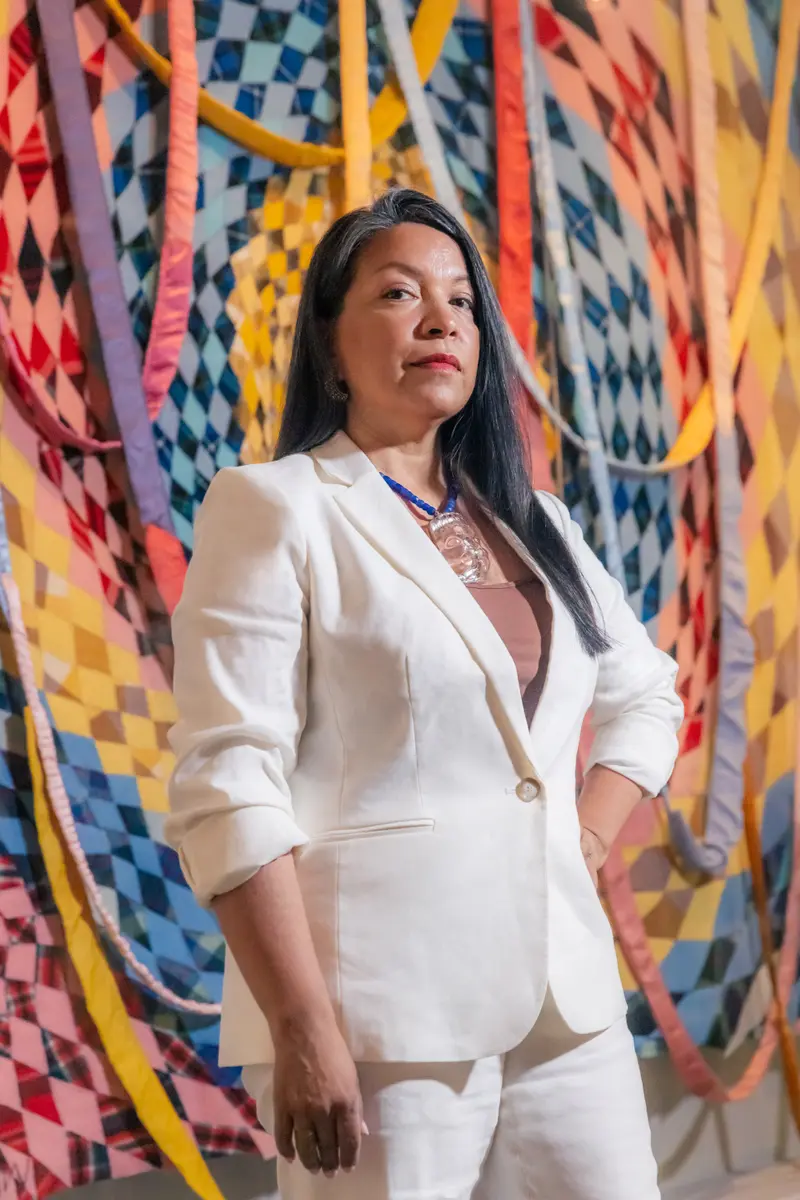
The Met said in its statement that it drafted a new Native American Arts Initiative in 2021 under the guidance of its “first-ever” curator of Native American Art Patricia Marroquin Norby (Purépecha, an indigenous community in Mexico). The initiative, said the museum, includes “creating an advisory committee and hiring a full-time staff position that will collaboratively focus on NAGPRA responsibilities and further prioritize the building of ongoing partnerships as well as the strengthening of community collaborations.” In March, the Met said it was also hiring a Native American art researcher whose responsibilities will include “some provenance research.”
What follows are the stories behind several Indigenous pieces that the Dikers have loaned or given to the Met. ProPublica interviewed experts and cultural officers at the affiliated tribes to learn how some of the Diker Collection objects survived brutality, theft and exploitation, little of which the visitors who pay to see them learn about from the museum.
The two carved masks that Beatty was shocked to see at the exhibit’s opening still hang in the museum. A description of them on the Met’s website says that “spirits communicate with people through whistling: these masks may be the faces of such supernatural beings.”
They may be sacred. But that’s only part of the story.
The Alutiit have lived on the Aleutian Islands in southwest Alaska for 7,500 years. In winter, people would once huddle indoors and create utensils, clothes and ceremonial objects. Using beaver-tooth tools, they would carve wood faces, painting them blue, green and red and adorning them with feathers and fur.
At a preordained time, the Alutiit would don their masks and dance and sing in ritual, said April G.L. Counceller, director of the Alutiiq Museum & Archaeological Repository in Kodiak, Alaska. A lot of the masks’ power was tied to those who had passed, she said: “For other ceremonies, the masks were a way to communicate with spirit helpers.” After the ceremony, people would hide the masks in caves to let the “sky creatures'' rest until the next rite.
In 1740, Russians invaded the area for its sea otter fur. They forced Alutiiq males as young as 12 to hunt and held Alutiiq women as ransom. People died of starvation, disease and abuse. After a century, the sea otter population had nearly collapsed, and the Russians left. The U.S. then arrived and set up schools that punished Native children for speaking their language. By the 1890s, the population of the Alutiit had dropped by 90% to 1,500.
Museums rushed to grab what was left of Alaskan cultures. When a Western Union expedition headed north, the Smithsonian Institution’s assistant manager, Spencer Baird, made sure that 20-year-old William Dall was on board to “salvage” tribal objects. Baird paid Dall $200 a year ($7,000 in today’s dollars) to ship his hoard to the museum. Baird also used “salvagers” on Army expeditions, Navy cutters and other quests, acquiring tens of thousands of pieces. The Met obtained Tsimshian rattles and Tlingit reed pipes from donors around this time.
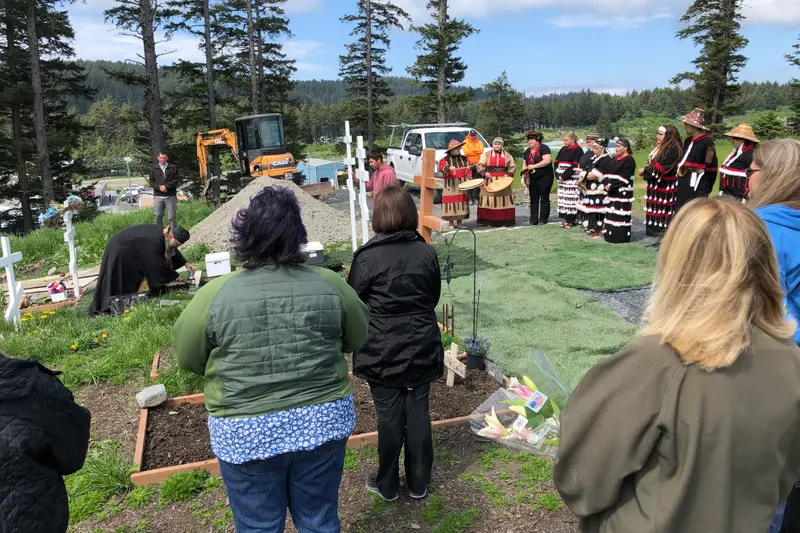
“Almost everything that wasn’t nailed down or hidden was taken away,” said Worl, the Sealaska Heritage president.
The Met said it has provided “updated summaries to Alaskan Native communities” and “the Tsimshian and other Northwest Coast communities are on our list to receive new collection NAGPRA summaries.”
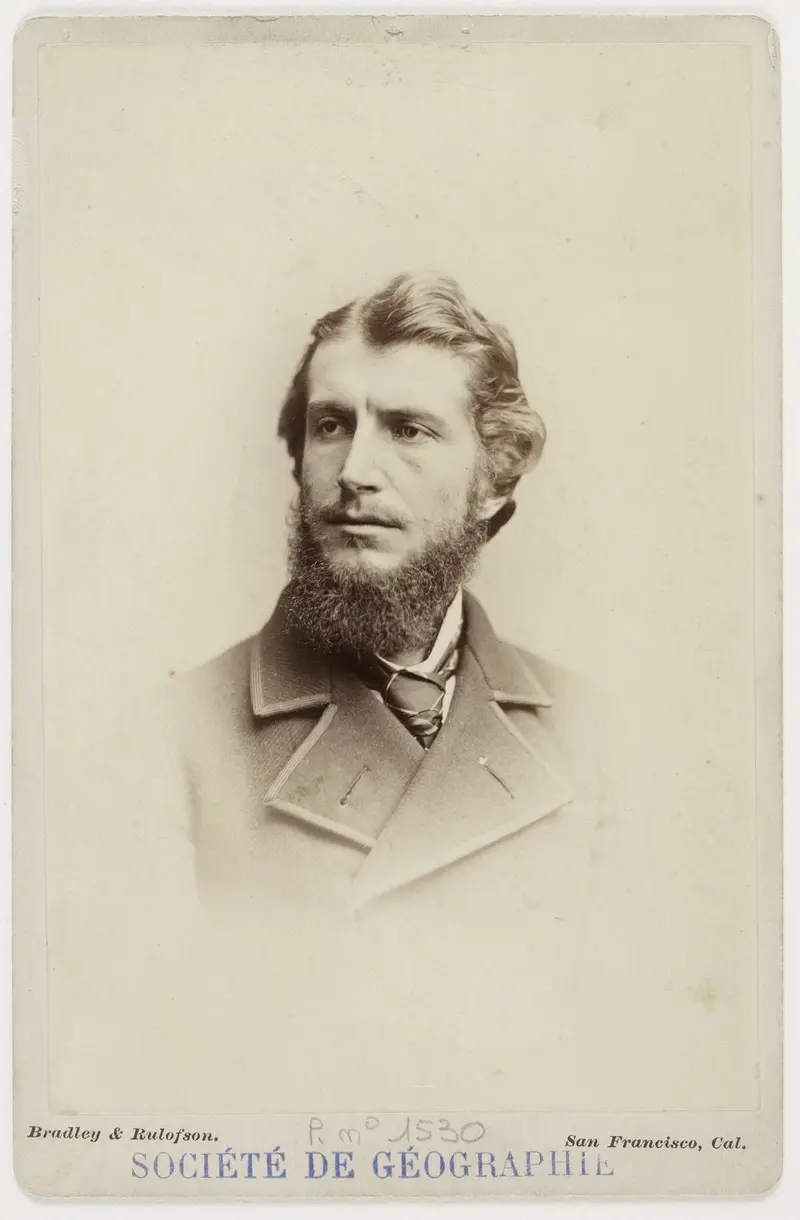
In 1871, 19-year-old Alphonse Pinart of France arrived. He spent months paddling a skin-covered kayak along the 600-mile Kodiak archipelago, stopping at islands where he found caves. Inside those caves, Pinart unearthed graves and helped himself to human remains, funeral items and masks, according to his journals.
That November, he stayed on Kodiak Island and learned the masks were used in Alutiiq rituals; he got to watch some ceremonies and published a paper about his findings.
After six months, he shipped the masks home to Pas-de-Calais and left. Before he died in 1911, he donated 87 artifacts to a small museum in a castle near Calais. They sat forgotten by the Alutiit for seven generations.
The Met’s provenance only lists owners from the past 20 years. The Dikers purchased the two masks in 2003 and donated them to the Met in 2017. The museum filed a summary with the NPS listing them in 2022, five years after the deadline.
The museum stated that in 2023, “it was recommended that the masks remain on view to provide community access.” Tribal members who live where the masks were made must travel 3,500 miles to reach the New York museum.
In 2019, the Met displayed this bag of arrows with a placard reading: “The painted and beaded patterns on this quiver symbolizes protective sacred powers.”
This description indicates the object is holy and, out of respect, should not be displayed, said Ramon Riley, the cultural resource and NAGPRA representative for the White Mountain Apache Tribe in Arizona. “But I need to see the documents showing how they escaped from their home,” he said, meaning their provenance.
The Met lists no such history. And because the Dikers loaned the quiver set to the Met in 2017 and didn’t transfer title to the museum, the Met wasn’t required to inform tribes that it possessed the item.
For the Met to list the piece merely as “Apache” shows a lack of due diligence, as there are more than 10 Apache tribes. If Met curators had contacted any of those tribes, they might have learned which group created the items. These pieces have a history that should be respected, said Riley: “The set could have been looted or taken at gunpoint.”
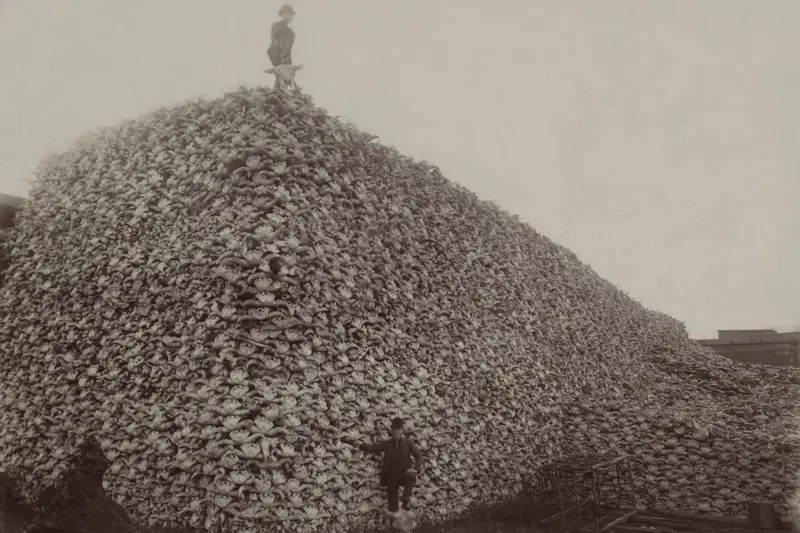
In the 1870s, one of the more ruthless leaders in U.S. military history, Gen. William Tecumseh Sherman, was pursuing the Apaches. During the Civil War, he had burned Atlanta. As commanding general of the Army and director of the Indian Wars, he was using similar scorched-earth methods, including devising the slaughter of 5 million buffalo to starve Native Americans.
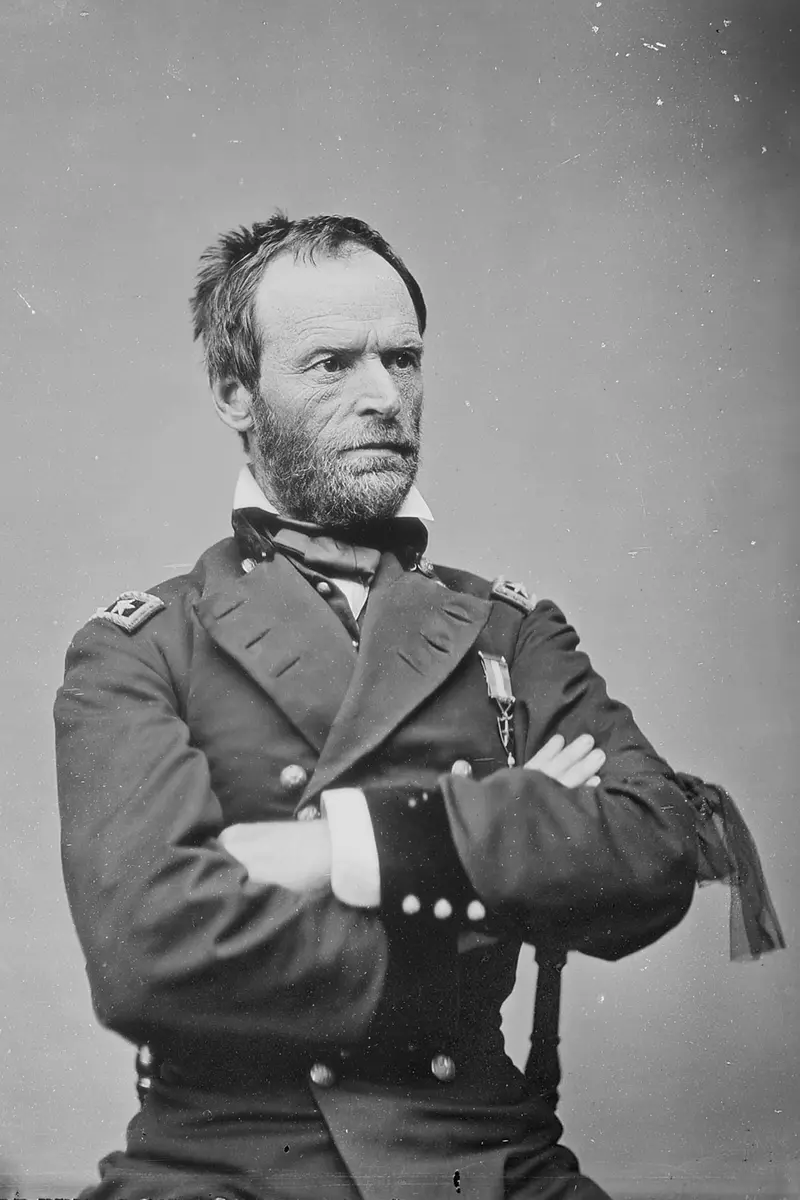
At the time, the U.S. was planning its first world’s fair: the Centennial International Exhibition of 1876 in Philadelphia. The Smithsonian was asked to create an Indian “artifact” gallery to rival the antiquities in European museums.
In 1873, the Smithsonian’s director, Joseph Henry, wrote Sherman: “We are desirous of procuring large numbers” of Native American “dress, ornament, weapons.” He asked Sherman to tell his soldiers to send “specimens” from the battlefield. At Sherman’s request, Henry paid each uniformed “picker” up to $500 (the equivalent of $14,000 today).
The plan helped produce one of the fair’s more popular exhibits, which included Apache arrows. When the expo closed, Henry’s deputy packedthe collection onto 48 rail cars bound for Washington, D.C.
By 1878, the demand for “Indian” items had grown so large that the Smithsonian asked the public to unearth “American Aboriginal” artifacts from mounds, caves and cemeteries. Soon, the spoils of war and grave robbing filled America’s new museums like the Met, but few items had documentation or provenance.
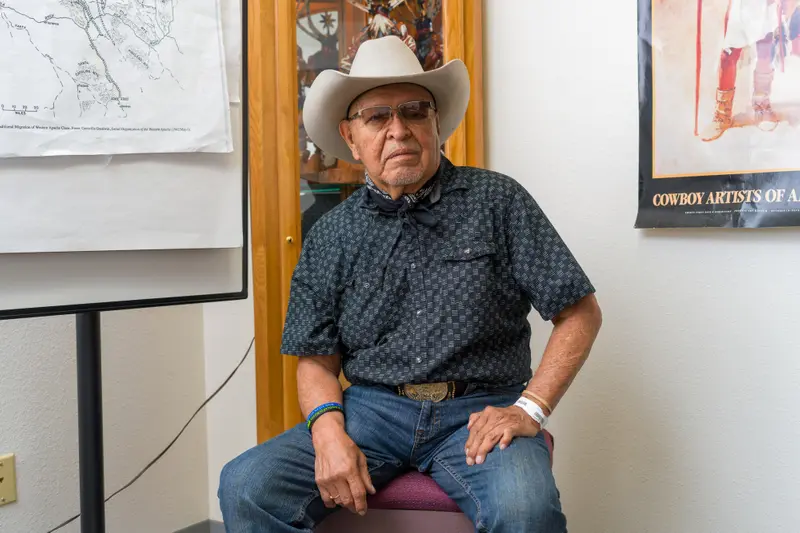
Riley learned this while searching for the remains of his clan relative. His ancestor worked as an Army scout, carrying a government-issued rifle and his own bow and arrows. But during a massacre he was arrested for mutiny and hung, said Riley. The scout was buried with his possessions. Days later, his body was dug up and displayed in a cabinet inside Fort Grant, in what was then the Arizona Territory. Eventually, his remains were shipped to the Smithsonian.
Riley doesn’t think his relative’s quiver set was displayed by the Met; he believes that the set in the Diker Collection is a funerary item. “But to people like the Dikers, it’s all art,” he said. “It’s crazy.”
In March, after ProPublica had asked about it, the Met said it had been made aware that the quiver-and-arrow set was “potentially culturally sensitive” and had removed it from public display. The loaned item has not yet been returned to the Dikers.
When the Met displayed this item in 2019, the placard read: “During early reservation life, Plains people created objects such as this for sale to visiting military personnel, government officials” and “missionaries.”
“Sale?” said Peter Gibbs, an archivist in the Rosebud Sioux tribe’s historic preservation office. “The museum has got it wrong.”
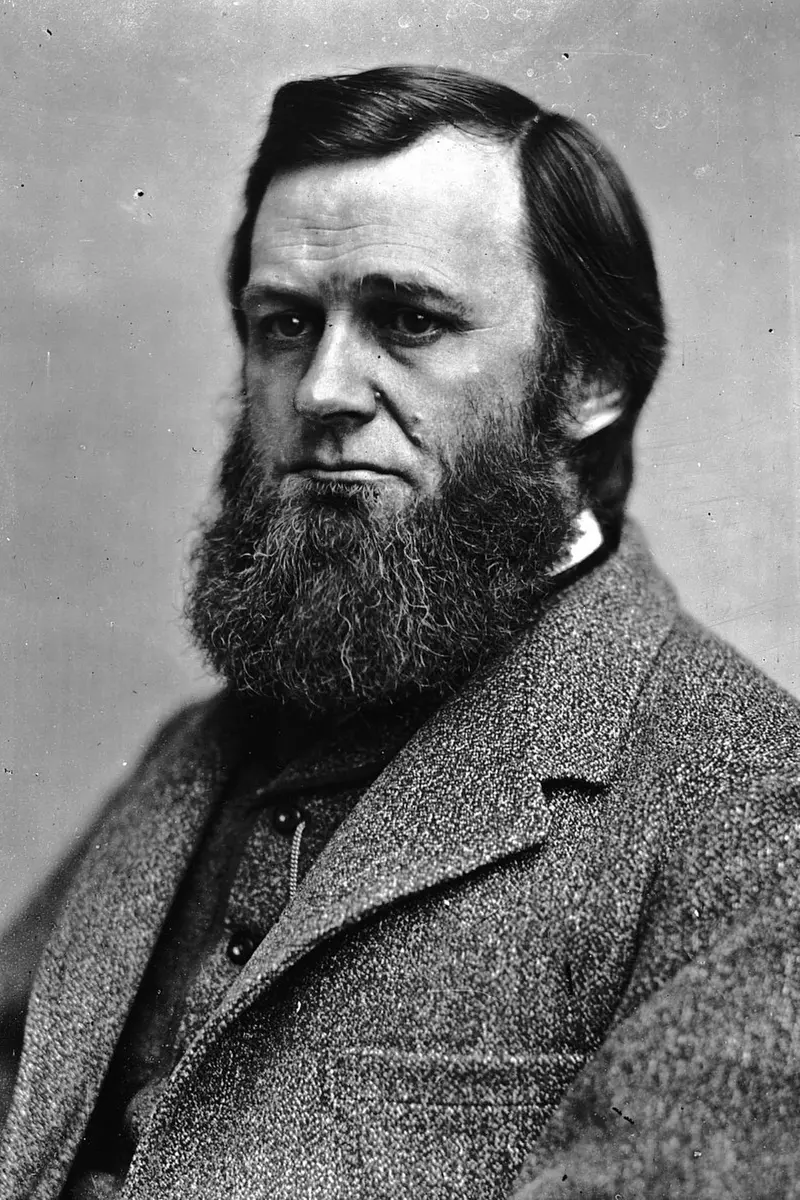
What really occurred is that an “Indian Ring” of agents and politicians were taking bribes from people who wanted to do business on reservations. In 1886, the government hired a bankrupt 52-year-old from New York, L.F. Spencer, as an Indian agent.
Spencer arrived during hard times at the Rosebud reservation in what is now South Dakota. The U.S. sought to control the tribe by sending its children to the notorious Carlisle Indian Industrial School in Pennsylvania, where they endured harsh labor and abuse, sometimes leading to their death. The government stopped providing rations to parents who refused to give up their children.
Spencer befriended Spotted Tail Jr., son of Chief Spotted Tail, who held some of the tribe’s communal items, including the painted tipi. After Spotted Tail died in 1888, Spencer claimed the chief had signed an undated will giving Spencer many items, including the “great medicine pipe of the Sioux nation.”
Gibbs believes the will is a fraud. The pipe had been handed down to Spotted Tail by his father and his grandfather. “Junior would never have passed this pipe on to Spencer, nor the tipi,” Gibbs said. Spencer’s dishonesty was so well known that the Indian Rights Association urged the Army to fire him.
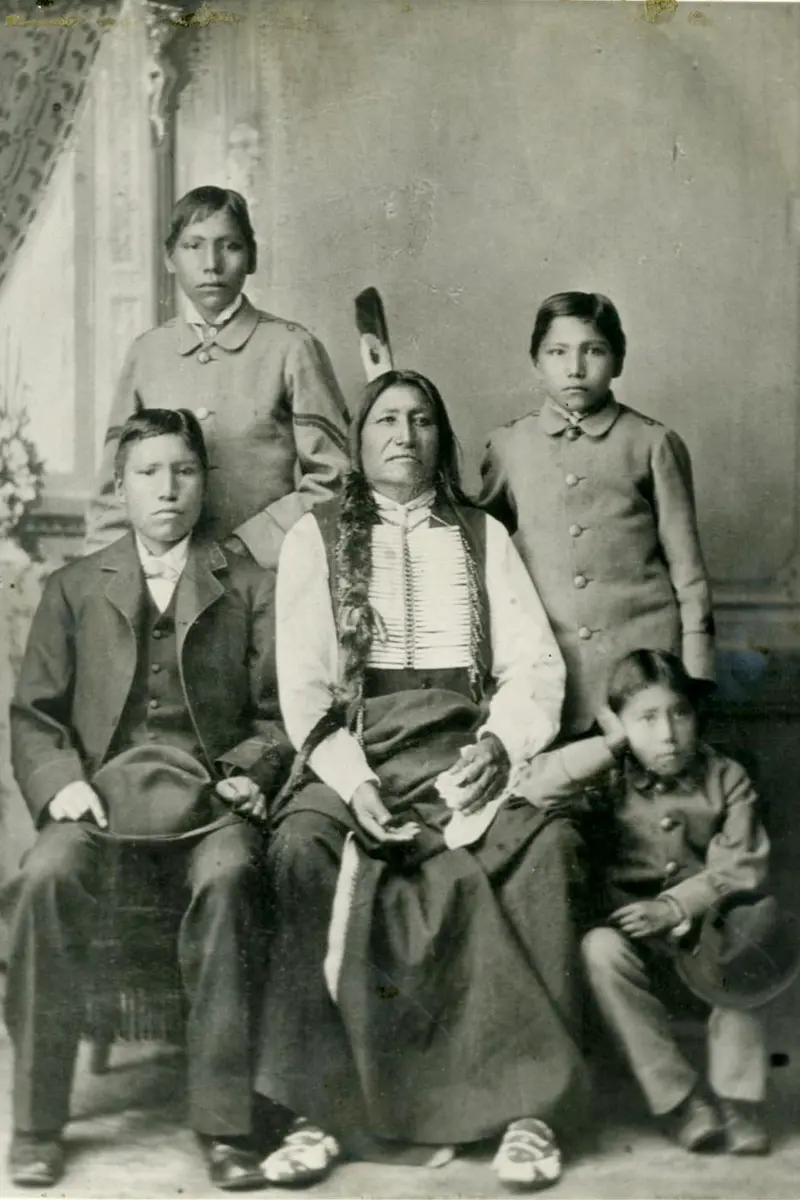
In 1889, Spencer gathered his haul and left. Back in New York, he lectured to parlor clubs about his “Wild West” exploits, showing off the tipi and other items.
After Spencer died, his daughter, Harriet Lund, bequeathed some of his spoils to relatives and to an unspecified museum. In 1963, Spencer’s granddaughter Vivian Backen sold Spotted Tail’s will and other items to a Denver art dealer, according to Spencer’s descendant Dick Miller. Correspondence between Backen and the Denver art dealer supports that history.
But the Met’s provenance doesn’t list these names. The art dealer sold a tipi from Spencer’s cache to the Denver Art Museum for $500, or about $5,000 today, even though it had mildew rot and patched holes.
In 1965, a curator at the museum sold the tipi. The Met’s record says the buyer was Larry Frank of New Mexico. After Frank died, the Dikers bought it in 1989. In 2018, they gave it to the Met, where it was displayed in pristine condition.
The Met has described it as a souvenir. But Ben Rhodd, the Rosebud Sioux tribe’s then-cultural officer, said it had another purpose entirely. The tipi shows triumphant warriors on horseback, holding up shields that represent their male societies. It was an educational tool meant to instill pride in Lakota children for their relatives’ achievements — and to teach them how to erect a tipi, he said.
“This inaccuracy is the result of a lack of consultation,” Rhodd told ProPublica. “And I think the piece has been looted.”
It’s been five years since the Met accepted this gift, and tribal officials say they still haven’t heard from the museum. The item is no longer on display; the Met said it intends to contact the tribe and file a summary as part of “our ongoing NAGPRA work.”
“Nampeyo was the first Southwest potter to become recognized by name outside her Hopi community and is renowned for her technical skills and aesthetic sensibility,” states the Met’s website. She was also one of the first Native American women to control her own work by selling directly to buyers.
The Met’s history of the jar is missing dates, but there’s enough documentation to show it was probably obtained legally. It’s an example of a commercial work of art in the Diker Collection that is appropriate to display. (In its statement, the Met said it “recognizes the sensitivity of some items in its historical Native American collection” and as a result is prioritizing the acquisition of “more modern and contemporary works by Indigenous artists.”)
In 1874, Nampeyo was a shy 15-year-old who sometimes wore a traditional manta, a type of shawl. A surveyor snapped her picture, which wound up on ads to lure tourists to the Arizona Territory. Unwittingly, Nampeyo became an iconic image of the Southwest.
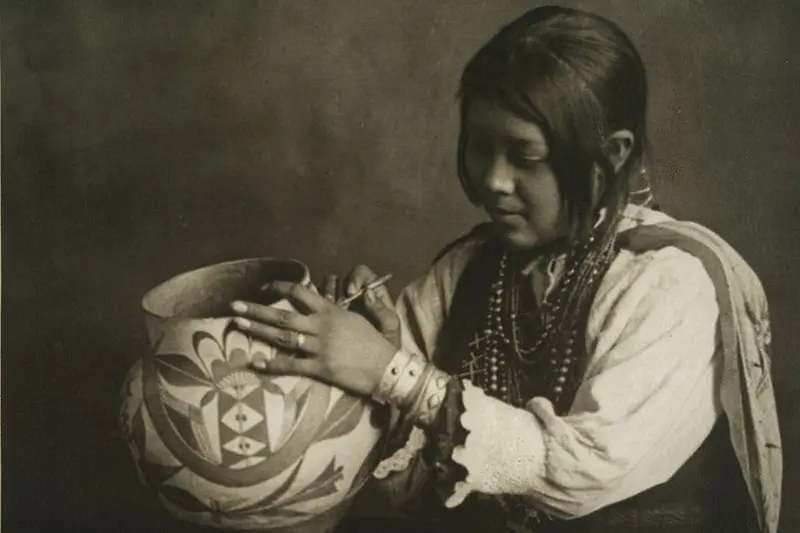
It was a mixed blessing, said Leigh Kuwanwisiwma, a former Hopi Tribal Historic Preservation Officer. For centuries, the Hopi have lived on remote mesas that tower more than a mile over the surrounding landscape, allowing them to freely practice their language, religion and culture.
In the 1880s, however, a flood of dignitaries, artifact “pickers” and scholars arrived to glimpse the Hopi’s “exotic” culture. Seeing an opportunity, an old soldier from Kit Carson’s Army brigade, Thomas Keam, set up a trading post near the mesas. He plundered graves and ruins for pots and jars to sell.
In 1889, Keam sold 3,000 Hopi pieces to the Smithsonian for $10,000 — or $350,000 today. When Keam ran out of plundered pots, he turned to Hopi women, including Nampeyo, to produce them. Her mother was a Tewa, her father a Hopi, and she’d grown up near an abandoned ancient village. Playing with designs, Nampeyo made pots with yellow-orange clay and painted figures on them using black, red and white mineral pigments. Then, she polished the surface to a high sheen.
Keam sent some of her pieces to the World's Columbian Exposition held in Chicago in 1893. Collectors took notice, and Keam sold them her work. According to some scholars, Nampeyo received a fraction of the profits. By the late 1890s, she was selling directly to customers.
An ex-mayor of Chicago, Carter Harrison Jr., acquired one of Nampeyo’s works. The burnt-amber pot had a stylized face of a dancing kachina. In the 1930s, Harrison gave the object to his men’s club named the Cliff Dwellers. It sat in the foyer for decades.

The Met’s provenance says the piece was sold in 2010 by Bonhams auction house. Bidding was intense. When the gavel came down, the Dikers had bought it for $350,000, a record for Southwest American Indian pottery.
The Dikers gave the jar in 2017 to the Met, where it is currently on display. Since it’s not a sacred or funerary item and was made for commercial use, the museum is not required to file a NAGPRA summary.
“The Objects are Not Well Documented”
Midway through the Diker exhibit’s setup and development, the Met hired some advisers. But this group did not have time to contact the appropriate tribal officers, said one of the advisers, Brian Vallo, the then-director of the Indian Arts Research Center at the School for Advanced Research in Santa Fe and a former governor of Acoma Pueblo in New Mexico. Vallo stressed that he was not a tribal leader at the time but said it was important to educate the Met “on issues of cultural sensitivities and representation.”
(ProPublica spoke to Vallo several times for this story. The Met also invited the news organization to interview him, describing Vallo as an expert in “Native arts and culture” and “familiar with the field.”)
This advisory group learned the Met didn’t have a procedure for properly curating, consulting, documenting and displaying Native American objects. They insisted that the museum hire an indigenous curator.
“The Diker collection is quite beautiful, but many of the objects are not well documented.,” Vallo said. “There needs to be an informed process that should be followed so the museum doesn’t take in items protected by federal laws, including NAGPRA.”
Soon after the Diker exhibit opened at the Met in 2018, O’Loughlin, the Association of American Indian Affairs director, heard complaints about the show from members of her organization. She contacted the curator of the Met’s American Wing, Sylvia Yount, hoping to connect her with cultural officers of the tribes that had made the objects in the collection.
“I offered to bring them to New York so they could give their perspective on the display,” O’Loughlin said, but Yount declined.
Yount said publicly that she had consulted with tribal “leaders.” The museum had hired Indigenous and nonnative academics and consultants — advisers who were not chosen by the tribes to represent them, as required by NAGPRA.
Of the meeting with O’Loughlin, Yount said in a statement that they had a “productive” session in which they discussed the Met’s “ongoing NAGPRA efforts and potential future collaborations.”
As a nonprofit with $5.58 billion in assets, the Met should have hired the staff needed to provide accurate information about its works years ago, experts said. “It could set an example about the importance of combating illegal trade and the need to protect cultural heritage,” said Tess Davis, director of Antiquities Coalition, which fights cultural trafficking. “But it seems they are doing the opposite.”
Tribal members are skeptical of many museums’ willingness to consult with them. As a result, the Department of Interior in January announced proposals to improve NAGPRA by, among other things, emphasizing that museums consult with tribes at every step of the process and defer to the customs and knowledge of tribes and their lineal descendants.
When Riley, of the White Mountain Apache Tribe, learned the Met was displaying the quiver set, he grew upset. “I wanted the museum to take it down, but I didn’t know who to ask,” he recalled.
He understood the limits of NAGPRA, having been rebuffed in a previous attempt to reclaim “four of our sacred objects” held by another East Coast museum. “We had to prove that it belongs to us, that it was stolen and that it should be returned. And the museum didn’t have to prove a thing,” he said.
And those looted masks? In 2002, Sven Haakanson Jr., then-director of the Alutiiq Museum, stumbled upon some of his people’s carvings at the Château-Musée de Boulogne-Sur-Mer in Pas-de-Calais. The French looter Pinart had given the masks to the museum a century earlier. Stunned, Haakanson met the facility’s then-director and spent the next six years cultivating a relationship with the museum. Finally, in 2008 the French shipped 34 masks to the Aluttiq Museum as a temporary loan.
Haakanson mounted a groundbreaking exhibition. “We wanted people to see that the masks were not only striking, but part of an Alutiiq tradition of sharing 7,000 years of history,” he told ProPublica. The exhibit brought some people to tears. “It helped heal the unspoken wounds of the tribe,” he said.
Now, the Alutiit are relearning how to make masks as their ancestors once did.
Such successes inspire Gibbs and the Rosebud Sioux tribe. “There should be a Cultural Repatriation Day when it’s safe for everybody and anybody who has something to give it back to tribes, no questions asked,” he said.
That includes the Dikers, he said, and the Metropolitan Museum of Art.
